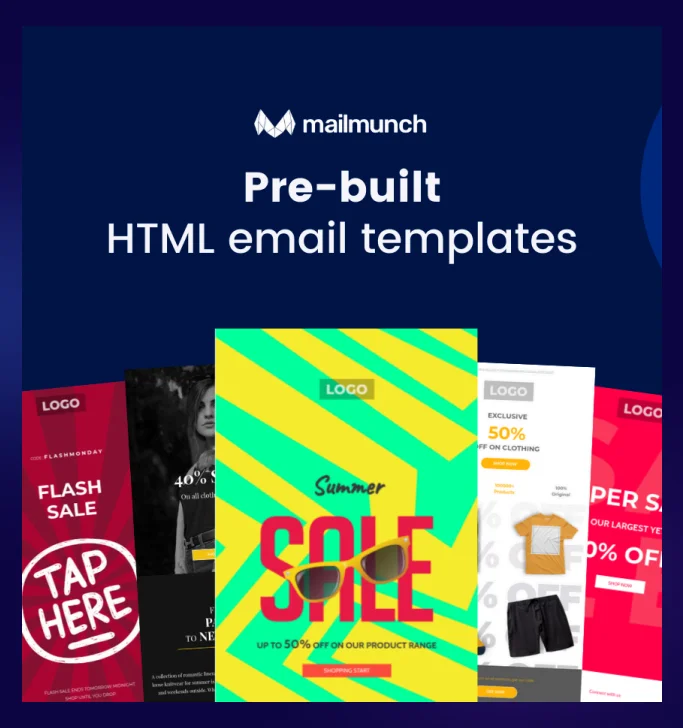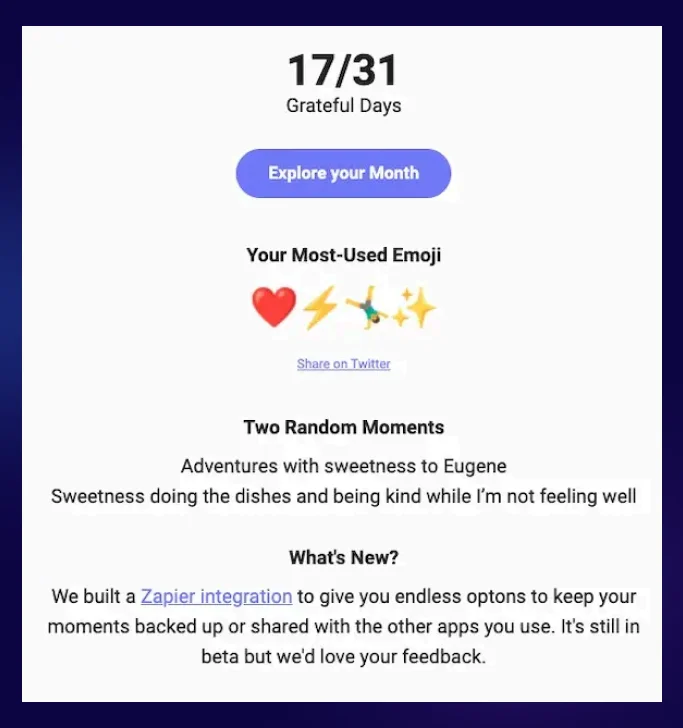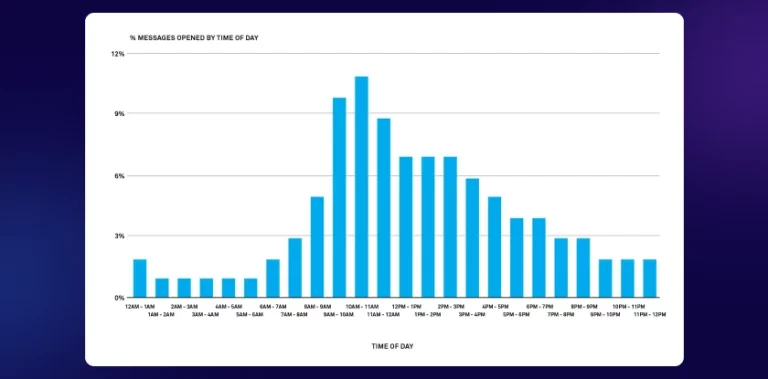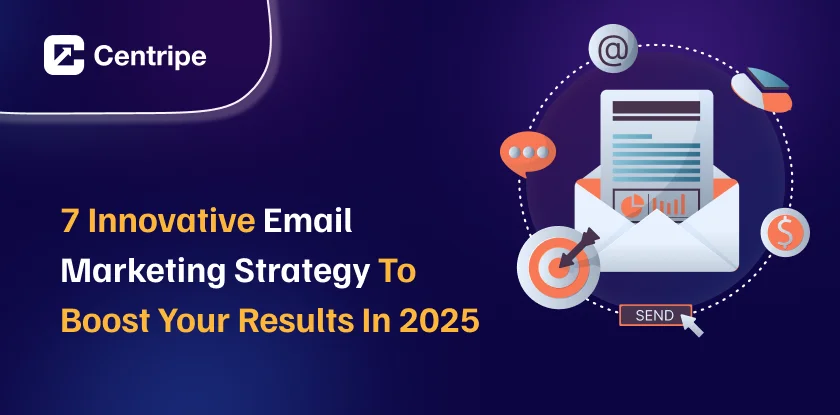Let’s not sugarcoat it — email marketing still works. DMA’s 2024 report says you get $56 back for every $1 spent, proving the benefits of email marketing are stronger than ever. But most B2B teams still treat it like it’s stuck in the past.
Sending the same message to the same people over and over? That’s not called a strategy, it’s just hoping for a different result.
If you’re part of the 77% of B2B companies without a real email marketing strategy, you’re leaving serious revenue behind.
What is Email Marketing Strategy?
An email marketing strategy is your step-by-step plan for using email to grow your business. It’s not just about sending random emails. It’s about sending the right message to the right people at the right time.
Here’s what it really helps:
- You can easily set when to send and how often, with an email calendar, so people don’t forget you.
- You decide who you want to send emails to (like your customers or leads).
- You plan what to say, it could be offers, updates, tips, or reminders.
Having a clear email marketing plan ensures all of these actions are aligned with your goals instead of guessing your way through campaigns.
7 Effective Email Marketing Strategy
1. Design Your Email

A well-written email should look simple and clear. If it looks confusing, most people won’t even open it.
Start by writing a subject line that grabs attention. Then, write a short message that quickly tells them what they need to know.
The fonts should be easy to read by everyone. Fancy styles can make it difficult for people to understand.
Put in one visual or image to convey your point. Don’t forget a big, clear button like “Buy Now” or “Know More.”
You don’t need to design from zero. Save time by using the ready-made template in the email tools and also appear professional.
2. Define Clear Email Marketing Objectives
Before you start sending emails, you need to know why you’re sending them. Just sending more emails doesn’t help, your goal should connect to something real, like getting more sales or keeping your customers happy.
If you want more sales, try this:
- Get more people to buy more items at once
- Find people who are really interested and turn them into buyers
If your goal is engagement, then aim for:
- 25% or more of people opening your email
- At least 2.5% click on your links
- Keep unsubscribes under 0.5% (if people are running away, something’s broken)
If you want to improve the customer experience, try this:
- Help new users quickly understand how your product works
- Make customer support emails more helpful and friendly
- Get people to actually use your product, not just sign up and disappear
3. Email Segmentation of Your Audience
Not every person on your email list is the same. Some are new, some are already your customers, and some are still deciding. That’s why email segmentation is important.
This is the simple act of dividing your email list in a small group so that you can communicate the correct message to the correct people.
Additionally, you can also give a discount to people who have already purchased from you a discounted offer, and welcome tips to your new subscribers.
Here are a few easy ways to segment your audience:
- By how the audience behaves on your website
- By their age, gender, or location
- By what they’ve bought in the past
- By where they are in the buying customer journey
- By how often they open and click your emails
Hence, using email segmentation is one of the smartest ways to improve results without sending more emails, just better ones.
4. Make Your Content Feel Personalized

People trust other people’s recommendations. Therefore, when your email displays the actual photos, reviews, or even videos of your satisfied customers, others will automatically believe you as well.
It’s like hearing a friend’s advice instead of a brand talking.
Sharing user stories, selfies with your product, or quick feedback in your personalized email makes your message feel warm and personal, not like a robot trying to sell something. It tells people, “You’re not the only one loving this.”
And when the customers are not giving you sufficient content, just ask. Run a fun hashtag on social media or give a small shout-out in return.
You will create trust, community, and additional clicks all in one go.
5. Write a Subject Line That Gets Clicks
Think of the subject line like the cover of a book; if it’s not interesting, people won’t open it. Indeed, most recipients determine whether to open an email based on the subject line.
This is why you should take some more time on it. A good subject line may attract clicks, sales, and even attention, while a boring one will simply be ignored.
Don’t keep it too long, so that it is clipped off (stay around 50–60 characters). Use simple, strong words that create curiosity or excitement.
It would be better if you could include the name of the reader or some personal thing to make it feel personal to them.
Crafting high-performing subject lines should be a regular part of your email marketing strategy, not just a last-minute fix.
6. Send Emails When Your Audience is Most Active

The time you send your email makes a difference. An email sent in the middle of the night might never get opened, while one sent during the day could get great results.
Consider the schedule of your audience. In case they are working professionals, it would be more effective to send the emails from 9 to 5, rather than sending an email on Sunday morning.
7. Implement Strategic A/B Testing
Don’t just guess what will work in your emails. Test and find out.
Start Testing These Things First:
- Test different subject lines for better engagement.
- Try new CTA text and placement for more clicks.
- Send emails at various times to find the sweet spot.
- Change the sender name to see what feels more personal.
- Compare short vs long emails, see what works.
- Add some personalization (like names or actions).
Never underestimate the amount of data needed to make a significant A/B test: at least 1,000 recipients so that you can be confident that ensures statistical validity
Common Pitfalls to Avoid in Email Marketing Strategy
1. Overuse of emails
Just because you can send emails every day doesn’t mean you should. Sending people excessive numbers of messages will irritate them, and they will either blacklist you or ignore you.
2. Sending the same emails to everyone
Punching out the same e-mail to all? It is the same as selling winter coats during summer. People are different, some are new, some are ready to buy. Send messages that match their stage, interests, or behavior.
3. Ignoring the mobile users
Most people open emails using their phones rather than laptops. If your email looks weird or takes too long to load on a phone, chances are it won’t be read. It is always a good idea to review it on mobile before sending it out.
4. Not testing before sending
It is not always wise to simply go with your feelings with email marketing. Test things like subject lines and buttons. Your email may not be opened or clicked by a large number of people in case of a minor change.
5. Always trying to sell
If every email screams “Buy now,” people will tune out. Mix things up. Share tips, tell stories, or solve problems.
6. Inappropriate sending time
When your audience is asleep or occupied with other activities, there are fewer chances of opening emails. Consider the riding time of your reader- will you send in the morning or during the lunch hours, maybe experiment to find out the best time.
7. Dull or confusing subject lines
The first thing that people notice is your subject line, and without an eye-catching subject line, people will lose interest in opening your email. Keep it short, crisp and exciting. A single line that could be in good taste could give you twice the marks.
Conclusion
Let’s be real…Email isn’t boring-Bad emails are!!!! Look, nobody wants to open another dull, salesy email.
Email marketing still works, and works really well. However, you have to do it right.
Don’t just bombard emails and hope for clicks. You never know who you are speaking to. Send something which is real. And test, tweak, and optimize.
It is not a matter of sending more e-mails at the end of the day, though
It means sending ones of a better kind which people would want to read.
So, whether you’re sending your first campaign or your 500th, keep this in mind: Secret sauce= Right person + right message + right time
Frequently Asked Questions
Marketo- perfect for enterprise
Active campaign- Works well for good automation
Klaviyo- Choose if your work revolves around data collection
